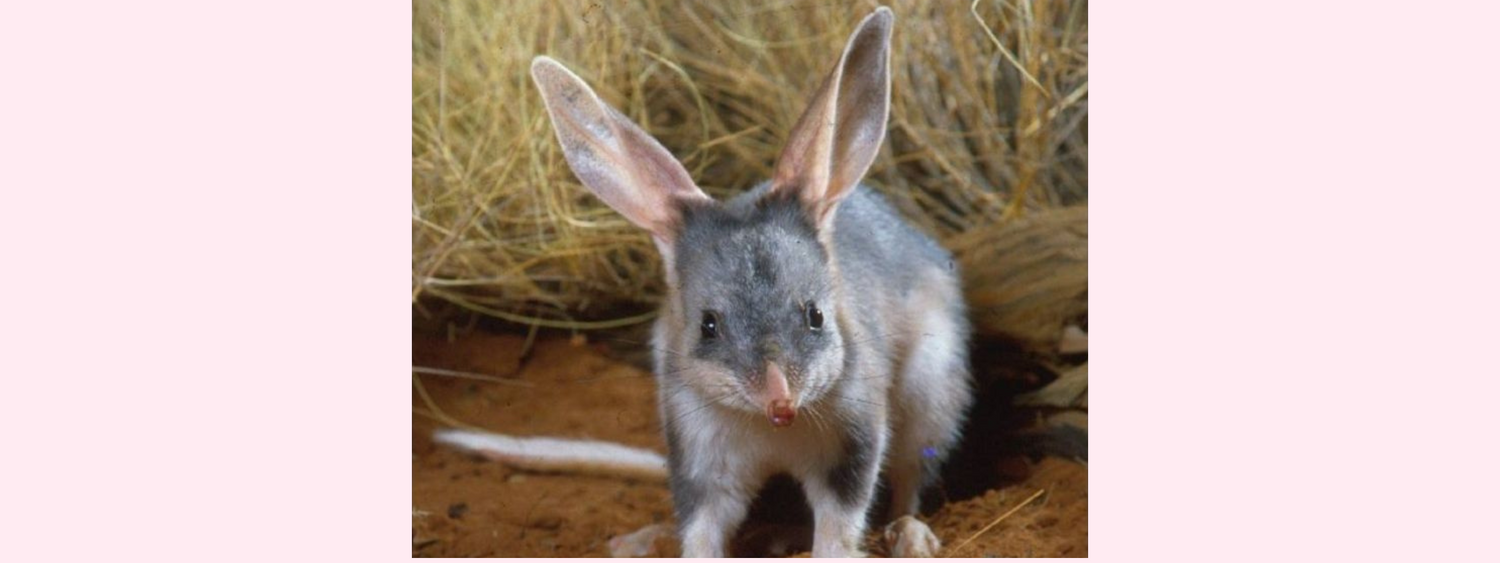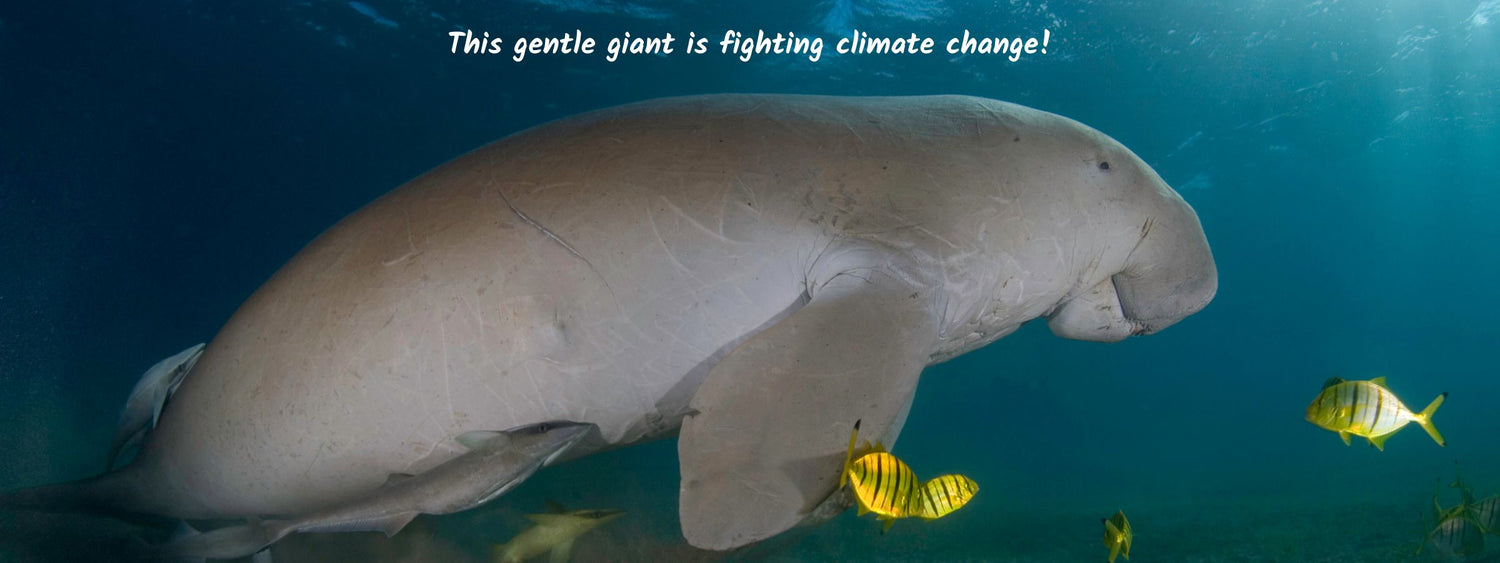Want to know where bilbies live and about their amazing 'spiral' bilby burrows?
Or, maybe the 2 reasons why their big pink ears are so large - and important…
And why a Mum bilby's pouch faces backward?
You’ve come to the right place! We love bilbies and love to share their fascinating lifestyle with you.
Facts about our Greater Bilbies:
Did you know that the Greater Bilby is the only living bandicoot in their unique branch of the Thylacomyidae family?
There used to be a “Lesser Bilby” - but they disappeared in the 1950’s and are now agreed to be extinct - read to the end to discover more information about these apparently very feisty little characters!
Greater Bilbies used to be found across 70% of Australia but now they mostly reside in fenced areas where they can be kept safe from predators.
They are endangered in Queensland, and they are listed as vulnerable nationally - with less than 10,000 individuals estimated to remain in Australia.
Palaeontologists found a 15 million year old Bilby fossil in 2014. So, bilbies have been digging around in Australia for a long, long time. And considering their birth rate that’s one heck of a lot of bilbies. Of course, it also serves as a gentle reminder of how lucky we are to still have bilbies - after such a long time…
Why does a bilby have such large pink ears?

I’m sure you’ve noticed that bilbies have impressive long, pinkish coloured, ears. They use these as special “air conditioning units”. Did you know their ears are hairless - and are covered by a network of blood vessels.
These special ears help to cool them down when the temperature rises. Their ears are also a great way to help the bilbies regulate their body temperature in the heat out in the desert.
But bilby ears have another very important thing to do. These lovely big ears also act to magnify the sounds of the insects and the food they are foraging for because, unfortunately, their eyesight is very poor. Luckily, their great listening skills nicely fill this gap. Nature is very clever, isn’t she.
When they are relaxed, their ears go floppy - how cute it that?!
What do bilbies eat?
About an hour after sunset, the bilby goes off to find some food. It's listening with its amazing big ears - to tune in and hear insects like termites, worms, spiders, and even small lizards . They also eat vegetation - including bulbs, fruits, fungi and seeds.
After a fire, they like to enjoy one of their favourite treats - the bush onions they find in the regrowth.
All in all, that adds up to a nicely rounded diet of sustaining food choices for a busy bilby. 😊

When they are in the Save the Bilby Fund's breeding facility, they love protein rich, mealworms to eat.
You may be surprised to know that bilbies don’t need to drink, they can get all their water from their food. Because now they mostly live in sandy, hot and dry areas, getting water from their food is a real bonus for them.
More about our beautiful bilbies and a mysterious tale (tail):

If you’ve ever been lucky enough to gently hold and pat a bilby, you’ll may be surprised at how soft and silky their fur feels.
It’s a little-known fact that the bilby's very long tail holds an intriguing secret.
We all know their tail starts dark-coloured and then ends as a smooth(ish) white tail - with a white feathery end. But under that feathery patch hides a pink spur!
But nobody, as yet, has solved the puzzle as to why that spur is there - and what it was used for!
So, at this time, it remains a mystery.
The feathery end of their tail also raises questions. Here are some ideas why the end of the bilby's tail finishes with a feathery section.
One theory is that since bilbies run in a zig-zag manner, their white feathery end of the tail would flick in the opposite direction - and a predator would head for the ‘lure’ rather than the bilby itself.
Unfortunately, with the rise of feral cat numbers, it now acts like a flag to invasive predators at night.
Luckily, most bilbies are in areas that are "safe from predators", in fenced conservation areas. So they can now stay safe from introduced predators like cats and foxes.
And, for those of you who enjoy the details, the males body length is about 30-55 cm, plus a tail that’s about 20-29 cm long.
And the female bilbies body length is about 29-39 cm and they have a tail about 20-28 cm long.
Male bilbies weigh an average of about 2.5 kg. And the females are smaller – weighing about 0.8 to 1.1kg.
A bit about bilby babies…
Did you know that bilbies have the shortest gestation period for any mammal in the world - only 12-14 days.
Interestingly, a female bilby pouch faces backward as compared to most other marsupials. The opening is toward the rear legs - rather than toward the head. This prevents dirt and other materials from entering the pouch when the Mum bilby is hunting and burrowing.
You can imagine this is very important as our bilby eco-engineers are kept busy digging every night.
When the baby bilby joey is born, it looks like a tiny bean with little legs. So, it’s good to know that it won’t be coming out of that comfortable pouch for another 75 to 80 days.
When they do emerge from their cosy pouch, it’s a couple of weeks later before young bilby/bilbies are fully independent.
Research has confirmed bilbies live for about 5-7 years in the wild and they can live over 10 years in protected, fenced areas.
Why does a bilby ‘Mum’ have a backward facing pouch?
Bilbies love to poke their noses into the soil, scratch around, do lots of shallow and deep digging and create amazing underground burrows!
And because of all this soil engineering - as mentioned above - female bilbies have that unusual backwards facing pouch!
Of course, it’s very handy when she is scattering soil everywhere, while hunting for food or building a burrow, because the soil doesn’t get into her pouch and her little joey babies stay protected and clean.
BILBIES are now hopping on the “glow in the dark” bandwagon!
Yes, I’ve seen a photo of a bilby ‘glowing’ in pinkish/purplish shades…
When researchers put various animals under a 'black' (that is a UV) light, they discovered that bilbies have now joined with bandicoots, wombats, flying foxes, microbats, and Tasmanian devils - all of which show fluorescence (they glow in the dark) under UV light.
Nobody is sure why this happens - but it's amazing, isn’t it?!
Where they go to sleep…

Bilbies are burrowing animals - digging down to make twisty (spiralling) tunnels to keep themselves safe. These can be up to approx. 3m deep and have various advantages. Bilbies keep themselves cool and safe during the day by staying in their tunnels.
Bilbies are well known as ecosystem engineers as well, because they shift soil by digging, which in turn improves soil health. They use their large claws to rapidly dig, often sealing the burrow behind them to block the entrance from predators - and also to keep the temperature at a constant, comfortable, 23 degrees C underground.
They are nocturnal so they only head out to forage, eat, and dig around when it’s dark. They usually leave about one hour after dark - and return about one hour before sunrise.
Bilbies are cute, and quite small, but they certainly make up for their size in digging ability. All this means each bilby can move many tonnes of soil in just one year.
Bilbies make a new burrow every month or so. Some are for sleeping, and they use others specifically to escape from predators. It’s all pretty amazing!
It's no wonder they are known to improve our soil health. As they scratch, dig and burrow, they improve soils by mixing in organic materials, and also by bringing soil up to the surface where it composts. Then the nutrients are used in the ground to support other plants as well.
We need more bilbies in the world!
Apart from them being sooo adorable, they are top notch regenerators for our land.
How awesome is mother nature. 💗
Did you know that there was once a Lesser Bilby in Australia?

Originally there was a Lesser Bilby but it’s thought to have become extinct in the 1950’s. It was smaller; with pale, silky, tan-grey fur and a completely white tail.
Another difference, according to information from that era, was that these Lesser Bilbies always closed the entries of their burrows when they were inside.
Farmers reported that the Lesser Bilbies had up to a dozen burrows over their home range. Each burrow had its own entrance - which made it easier to quickly escape to safety.
When discovered by farmers in 1887 - they reported that the Lesser Bilby was a carnivore and ate native rodents. Some farmers who tried to hold them reported "vicious" bites and scratches. And that they had a very bad temper!
They weighed approx. 310-435g so they were smaller than our Greater Bilbies.
Lesser Bilbies were also nocturnal and they sheltered during the day in one of their deep burrows dug amongst sand dunes. Their diet consisted of termites, ants, roots and some seeds. Plus some native rats!
The Lesser Bilby was formerly widely distributed in two different regions of inland Australia: north eastern South Australia and south eastern Northern Territory, and the Gibson and Great Sandy Deserts of Western Australia .
When a ‘bilby’ went to the top of Mt Everest…

Well…it was a toy bilby, that managed to get to the summit of Mt Everest. 😊
Mountaineer Tashi Tenzing - grandson to Tenzing Norgay, who was one of the first two people ever to reach Everest's summit - brought a toy bilby to the top of the world at the request of his Australian son.
He attached the small, fluffy toy bilby to his back pack for the climb. It symbolised his heartfelt wish to conserve the wild places and creatures of our amazing planet.
And last, but not least – please support our very own Australian Easter Bilby

Please remember to show you love of our beautiful Aussie bilbies by purchasing Easter Bilbies each year. It’s an important fundraiser to help bilbies thrive into the future. I can vouch that the chocolate is delicious too.
It’s time to make sure it’s “Bilbies not bunnies” next Easter - and you’ll not only be helping the bilbies thrive, you’ll also be enjoying yummy chocolate at the same time. Sounds like the perfect combination if you ask me! 💗
🌸 🌸 🌸
I hope you’ve enjoyed this Blog about our very special and cute bilbies.
Please share this Blog with friends and family so they can be amazed by how these little bilby battlers make our environment better by just being here - and many other fascinating facts about them.
Save the Bilby Fund and Australian Wildlife Conservancy are working hard to keep the bilbies safe and to ensure their numbers keep growing.
Twizzle Designs has designed a delightful “I Am Bilby” tea towel in collaboration with the Save the Bilby Fund. They receive 100% of the profits from the sales of these Bilby Tea Towels - to help their bilby fundraising. Click the link below to view this lovely gift. It is available on their website:
https://savethebilbyfund.org.au/product/i-am-bilby-tea-towel/
We also donate a portion of our profits from every product in our range of exclusive Bilby gifts to fundraising for the bilbies. Please click here to view our Bilby range. Or copy and paste the address below.
https://www.twizzledesigns.com.au/collections/exclusive-bilby-gifts
Taronga Zoo and Currumbin Wildlife Sanctuary also breed bilbies to add to the gene pool of bilbies in safe, predator-free, fenced areas. These are safe places where bilbies can live freely.
And there are some other charities helping out the bilbies as well.
And, one last reminder to support “Bilbies Not Bunnies” every Easter from now on - to help save our wonderful bilbies. Thank you. 💗

We would love to see many thousands more bilbies happily hopping around freely through the Australian bush again because of our support!
🌸 🌸 🌸
This blog will be here to re-visit, share and (I hope) inspire for a long time into the future.
Please remember to bookmark it so you can come back to it at any time. 😊 Thanks.
And if you enjoyed this blog, please help us to share these interesting Bilby facts with family and friends - to help more people discover more about our wonderful bilbies.
The Twizzle Designs online gift store has a quality range of truly sustainable, Aussie-made, eco-friendly gifts - perfect for the next time you're searching for an awesome gift. 🎀
We also donate to:
💚 Supporting conservation of Australian native wildlife - especially bilbies
💚 Planting trees to regenerate nature, and
💚 Helping to care for our future Earth by donating to environmentally aware charities.
Because these are the things that are close to our heart. 💗
And please remember to visit us here at Twizzle Designs when you need an Australian-made, sustainable gift: 💚💛
https://www.twizzledesigns.com.au/collections/eco-gifts






